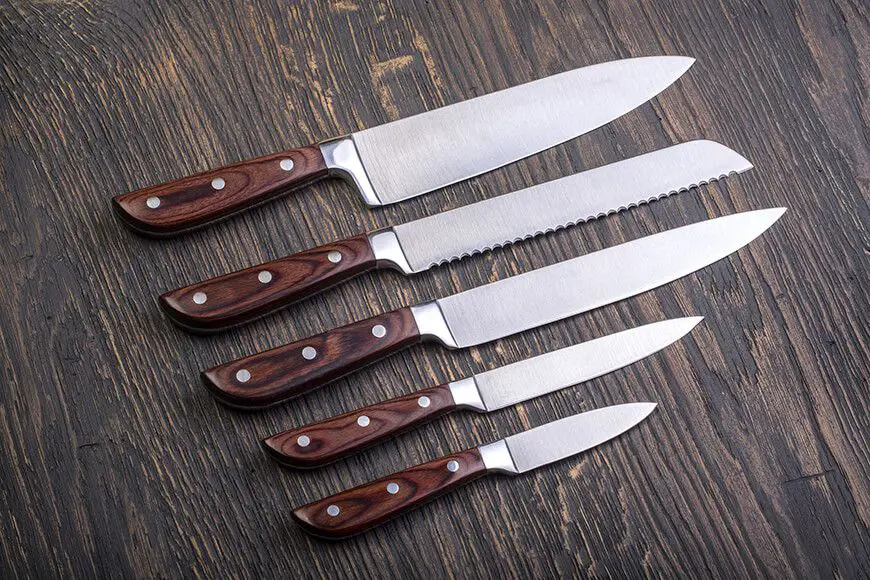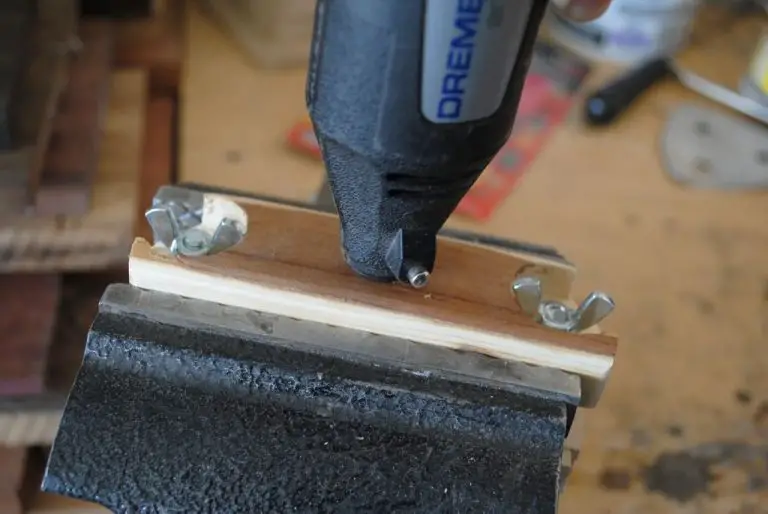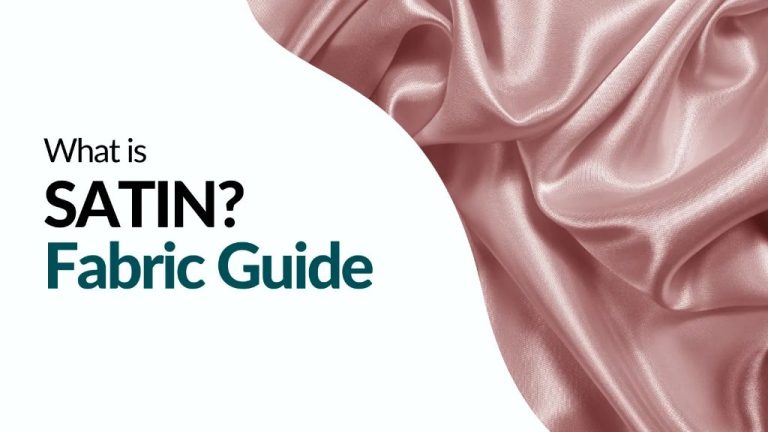What Is The Best Steel For Making Knives?
Knife making goes back thousands of years, with knives being some of the earliest tools created by humans. Over this long history, many different materials have been used to create blades, from stone and bone to bronze and iron. Modern knives use more advanced metals and alloys as blade materials, with the goal of optimizing different properties that lead to the best performance.
When choosing a steel for knife blades, key factors to consider are hardness, toughness, and edge retention. Hardness refers to a steel’s resistance to deforming or dulling. Harder steels can hold a sharper edge, but are often more brittle. Toughness indicates how well a steel can absorb impacts without chipping or breaking. Steels with high toughness are less prone to damage. Edge retention is a measure of how long a sharpened edge will last with use before needing re-sharpening. The best knife steels balance all three factors to create a sharp, durable blade.
By understanding the strengths and tradeoffs of different knife steels, knife makers can select an optimal material for the intended use of the blade. From kitchen knives needing frequent sharpening to survival knives meant for extreme conditions, the choice of steel plays a major role in the performance and longevity of the finished knife.
Carbon Steels

Carbon steel is one of the most common steels used in knife making. Some popular grades of carbon steel include 1095, 1084, 52100, and 5160. Carbon steel contains between 0.6-1.5% carbon content, which makes the steel hard but also relatively brittle compared to stainless steel (Source: https://www.messermeister.com/collections/carbon). The high carbon content enables the steel to be heat treated to high hardness levels (typically between HRC 58-62), allowing it to take and hold a very sharp edge. However, the brittleness means carbon steel can be prone to chipping or cracking if misused. Proper heat treatment and tempering is critical for optimizing the hardness, toughness and edge retention.
1095 is a popular high carbon steel for knives containing 0.9-1.0% carbon. It has good hardness penetration in heat treat, achieving HRC 60-62 hardness. 1084 steel contains slightly less carbon at 0.8-0.9%, making it tougher but slightly softer after heat treat (HRC 58-60). 52100 bearing steel has great edge retention with 1.0-1.1% carbon and also contains 1.3-1.6% chromium for increased hardness and corrosion resistance. 5160 spring steel has similar chromium content but slightly less carbon (0.55-0.65%), making it a tougher steel. Overall, carbon steels are valued in knives for their ability to take and hold a sharp edge. Proper heat treatment and tempering helps balance edge retention and blade toughness.
Stainless Steels
Stainless steels are commonly used in knife making due to their resistance to corrosion and staining. Some popular stainless steels for knives include 440C, 154CM, VG-10, and CPM S30V.
The main advantage of stainless steels is their corrosion resistance. They contain at least 12% chromium which forms a protective oxide layer on the surface of the steel. This prevents rusting and staining. However, stainless steels tend to be softer than carbon steels. Hardness values range from 54-62 HRC for most stainless knife steels.
440C is a high carbon stainless steel with great wear resistance and moderate corrosion resistance. It achieves a hardness around 58 HRC. 154CM has better corrosion resistance than 440C while maintaining most of its wear resistance. It reaches 59-61 HRC. VG-10 includes vanadium which improves edge retention. It is also very stain resistant and attains 60-62 HRC hardness.
Overall, stainless steels provide an excellent combination of corrosion resistance, edge retention, and ease of maintenance for kitchen knives. But they generally cannot get as hard as some carbon steels.
Tool Steels
Tool steels are ideal for knife making because they can reach very high hardness levels while maintaining toughness. Some popular tool steels for knives include A2, D2, and M2. Tool steels are alloy steels that contain high carbon with elements like chromium, vanadium, molybdenum, and tungsten added for hardness and wear resistance (https://agrussell.com/D2-high-carbon-tool-steel).
The high chromium content in tool steels provides good corrosion resistance while the high carbon and alloying elements allow them to be heat treated to high hardness levels – typically around 60-62 HRC. However, tool steels are less stainless compared to cutlery stainless steels. Proper heat treatment like quenching and tempering is critical for developing the full hardness potential in tool steels. Well heat treated tool steel blades have excellent edge retention but may be more brittle compared to softer or tougher steels.
D2 steel is one of the most popular tool steels for knives due to its combination of hardness, wear resistance and moderate toughness. It contains around 1.5% carbon and 12% chromium (https://knifemaking.com/collections/tool-steel-2). D2 performs very well as a knife blade steel, capable of holding an edge for a long time. M2 is another excellent high speed tool steel that can reach hardness up to 66 HRC through careful heat treatment. It contains higher amounts of molybdenum and tungsten for even greater wear resistance compared to D2.
Damascus Steel
Damascus steel is a laminated steel made by forge welding multiple layers of steel into a single billet. The characteristic wavy pattern on the blade comes from the layered steels being folded and welded over and over. According to Sanity Jewelry, the center of the blade contains a hard steel core which provides the edge hardness and sharpness. While the softer outer steel provides strength and flexibility.
The combination of hard and soft steels gives Damascus steel knives good hardness to maintain a sharp edge, while also having enough toughness and flexibility to resist chipping and breaking. According to Forseti Steel, Damascus steel combines the best properties of different types of steel. Making knives that have beautiful patterns and hold an edge well.
The layered construction and extensive forging of Damascus steel does make it more labor intensive to produce. Therefore, Damascus steel knives tend to be more expensive than other types of steel knives. However, many knife enthusiasts find the unique aesthetics and performance of Damascus steel worth the higher cost.
Cobalt and Nickel
The addition of cobalt or nickel to steel helps improve toughness and hardness. Cobalt Special steel, produced by the Takefu Special Steel Company, contains 1.1% carbon and 16% cobalt for superior corrosion resistance. Masamoto makes knives with VG Cobalt steel known for edge retention and corrosion resistance.
Cobalt and nickel steels are less common than carbon or stainless steels. The cobalt helps strengthen the molecular structure to prevent chipping and micro-fractures. According to discussions on Reddit, “cobalt special steel” refers to different proprietary alloys rather than one specific steel.
Powder Metallurgy
Powder Metallurgy (PM) steels are made by taking refined metal powders and compacting them into a billet before heat treating. This allows for an extremely uniform structure and fine carbide distribution (Powdered High Speed Tool Steel Knives).
The process starts with atomized steel powder, where molten steel is sprayed by jets of argon or nitrogen gas to create very fine spherical particles. These uniform particles can be compressed tightly together to form a billet. The result is a blade with superior strength, edge retention, and corrosion resistance compared to traditionally produced steels.
PM steels like CPM-S90V contain large amounts of expensive alloying elements like vanadium and molybdenum. This makes them very wear resistant but also more difficult to sharpen. Many premium knife makers use powder metallurgy to create high performance blades.
Ceramic Blades
Ceramic blades are made from zirconium oxide (also called zirconia), a very hard ceramic material. The hardness of ceramic knives is typically around 8.5 on the Mohs scale, compared to around 6.5 for stainless steel knives.
This extreme hardness allows ceramic blades to retain their sharp edge for much longer than steel. However, ceramic is also very brittle. While ceramic knife blades are strong against compression, they lack toughness and can chip if dropped or exposed to sudden impacts.
For this reason, ceramic knives are uncommon for heavy duty use. While the hardness provides excellent edge retention, the brittleness makes ceramics prone to cracking and unsuitable for demanding tasks where durability is a priority. Most ceramic kitchen knives utilize a steel (or other) tang with ceramic only forming the cutting edge.
Ceramic blades can maintain sharpness up to 10 times longer than steel knives. However, their brittleness and lack of toughness limit their suitability for most knives outside of light kitchen use. For demanding tasks, most knives utilize steel over ceramics for its combination of hardness, durability, and ease of sharpening.
Titanium
Titanium is becoming a popular material for knife handles due to its low density, high strength, and resistance to corrosion. According to Weknife, “Titanium is a popular material for making knives due to its strength, durability, and resistance to corrosion.” However, titanium has some drawbacks as a knife blade material. Titanium is not particularly hard, so it does not hold an edge as well as steels do. According to AG Russell, “Titanium is both hard and tough, and is about 1/3 the weight of steel which makes it ideal for knife handles.” While great for handles, titanium’s lack of hardness makes it a poor choice for knife edges.
Conclusion
When choosing the best all-around steel for knife making, there are several key factors to consider. No single steel will have the perfect combination of edge retention, corrosion resistance, toughness, and ease of sharpening. Often trade-offs must be made between properties. For most knives, I would recommend a high carbon steel such as 1095 or O1. These steels have excellent edge retention and are easy to sharpen, although they require extra care to prevent rust. If corrosion resistance is paramount, then a stainless steel like 154CM is a better option, although it will not get as fine an edge as carbon steel.
It’s also important to remember that heat treatment and blade profile play a huge role in how a knife performs. A lesser steel with an optimal heat treat can outperform a great steel with a poor heat treat. The grind, thickness, and shape of the blade also impact cutting ability. So while choosing the right steel is important, it is not the only factor in creating great knives.
In the end, most quality knife steels, whether carbon steel, stainless, or tool steel, can produce excellent blades when heat treated and crafted properly. By understanding the strengths and limitations of different steels, knife makers can select the right metal for each application and style of knife.



